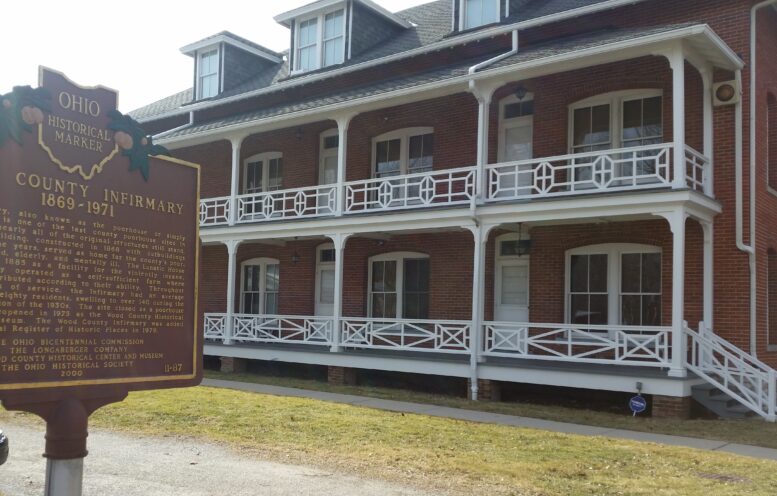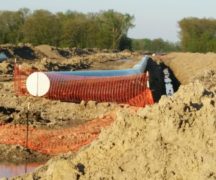By JAN LARSON McLAUGHLIN
BG Independent News
Rover Pipeline will be financing some historical projects here in Wood County as punishment for demolishing a historic structure along its route in another county in eastern Ohio.
The historic Stoneman House built in 1843 near Leesville, Ohio — which was eligible for listing on the National Register of Historic Places — was demolished by the Rover Pipeline, a company building a natural gas pipeline across Ohio.
Since the Rover line will be crossing through southern Wood County, a portion of the penalty Rover was forced to pay will finance some historical projects here.
On Thursday, Wood County Historical Center Director Dana Nemeth will present a couple ideas for the funding to the county commissioners.
The money could be used to make repairs in the historic asylum on the grounds of the county historical center. The building has some water problems causing damage to the walls. The funding could also be used to provide additional and more effective signage around the museum grounds.
The pipeline money may help free up historical society funding for other projects at the Wood County Historical Center, according to Nemeth.
“It looks like we might be able to do more restoration on other buildings since we have this money,” Nemeth said. Those buildings may include the site’s powerhouse and the hog barn.
Any proposals for the funding must be submitted to the state historic preservation office.
“As long as they give their blessing, it should be good,” Nemeth said.
Rover tore down the Stoneman House before notifying the Federal Energy Regulatory Commission, even though the commission had identified the building as a concern.
On Feb. 23, 2015, Rover reportedly filed its application for the project, which included a commitment to “a solution that results in no adverse effects” to the historic structure.
But the house was torn down in May 2016.
After learning that the house had been torn down, preservation office staff said Rover should provide financial assistance to the state preservation office for local preservation needs.
The company agreed to pay $2.3 million to a fund administered by the Ohio History Connection Foundation and the State Historic Preservation Office. A total of $1 million is for preservation work in the 18 counties crossed by the pipeline. The rest of the money will be used for projects across the state.
Wood County’s share is $50,000.
The demolition of the historic home is not the only screw up by Rover Pipeline along its Ohio route.
Crews working on the pipeline recently spilled drilling fluid on wetlands in Stark and Richland counties, according to papers filed with the Ohio Environmental Protection Agency.
The larger spill — estimated between 1.5 million and 2 million gallons — occurred in a wetland adjacent to the Tuscarawas River south of Navarre. The smaller spill is estimated at 50,000 gallons and occurred east of Mansfield.
Both spills involved drilling fluids — a mud containing bentonite — from horizontal directional drilling.
Energy Transfer Partners, based in Houston, is building the $4.2 billion Rover Pipeline to move natural gas produced by wells in the Utica and Marcellus shale areas from southeastern Ohio to distribution points in western Ohio, Michigan and Canada. The 713-mile route will have double pipelines varying in width from 24 to 42 inches in diameter.
The company hopes to have the pipeline operating late this year.





